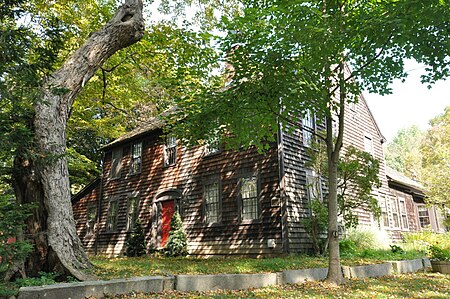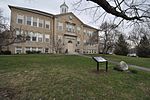John Glover House
1708 establishments in ConnecticutFederal architecture in ConnecticutHouses completed in 1708Houses in Newtown, ConnecticutHouses on the National Register of Historic Places in Connecticut ... and 1 more
National Register of Historic Places in Fairfield County, Connecticut

The John Glover House is a historic house at 53 Echo Valley Road in Newtown, Connecticut. Built about 1708 by an early town settler, it is a remarkably well-preserved example of 18th-century residential architecture, owned for generations by a locally prominent farming family. The house was listed on the National Register of Historic Places in 2001.
Excerpt from the Wikipedia article John Glover House (License: CC BY-SA 3.0, Authors, Images).John Glover House
Echo Valley Road,
Geographical coordinates (GPS) Address Nearby Places Show on map
Geographical coordinates (GPS)
| Latitude | Longitude |
|---|---|
| N 41.446944444444 ° | E -73.309444444444 ° |
Address
Echo Valley Road 53
06470
Connecticut, United States
Open on Google Maps









